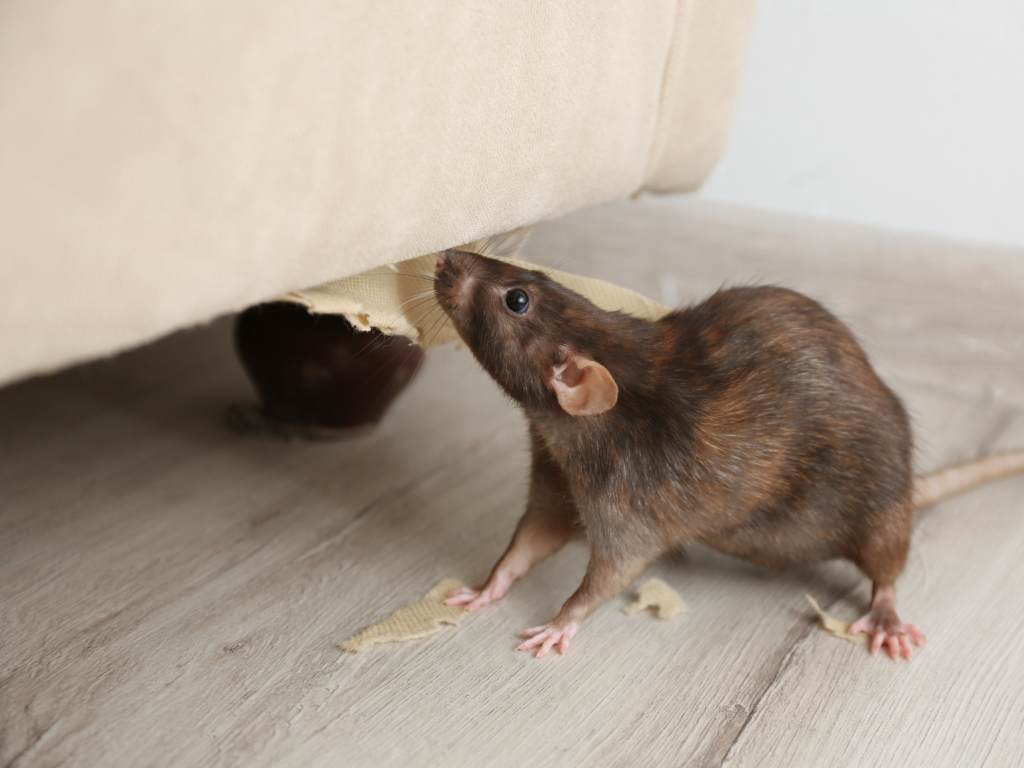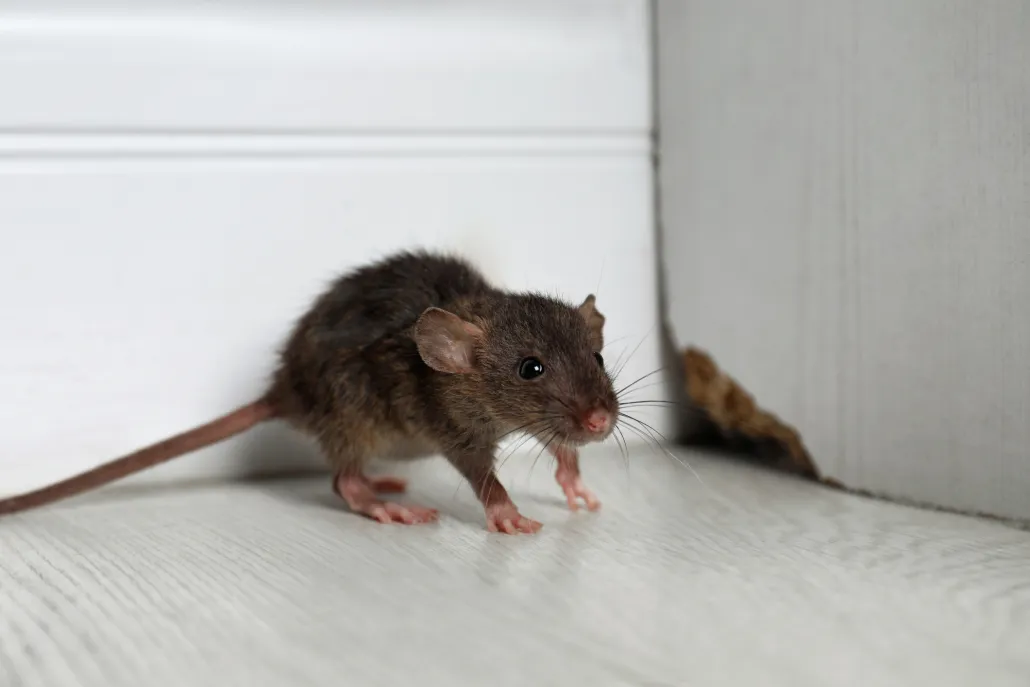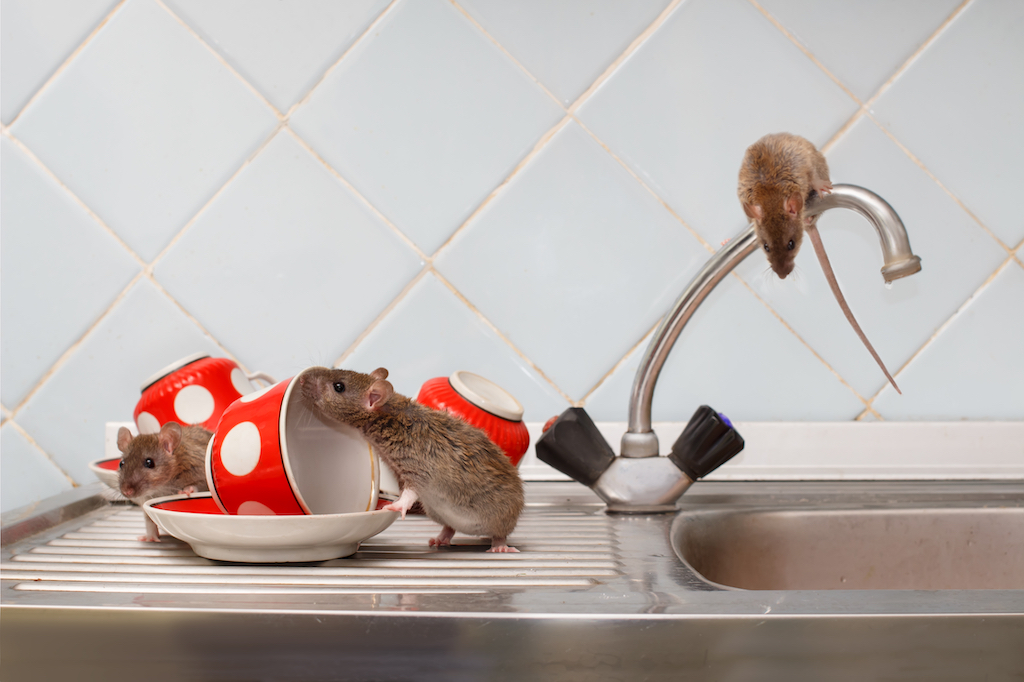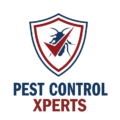Florida’s subtropical climate draws countless visitors and new residents each year, thanks to its consistently warm temperatures, abundant sunshine, and mild winters. Unfortunately, these same characteristics make the state an appealing habitat not just for people, but also for a wide range of rodents—such as rats and mice—that flourish under conditions of ample food, shelter, and moisture. In places like Greenacres, located in Palm Beach County, rodent activity can become a pressing concern if left unaddressed. Rodents often slip indoors through tiny gaps and cracks, feed on stored goods or scraps, and hide in attics or crawl spaces, posing serious health and structural risks over time.
This service page will explore why rodents thrive in Florida, the telltale signs of an infestation, and how professional rodent treatments administered by a skilled rodent exterminator can offer long-term relief. By understanding rodent behaviors, vulnerabilities, and control methods, property owners in Greenacres can uphold the cleanliness and integrity of their homes or businesses. Although a handful of rodents might seem like a minor nuisance, ignoring them can lead to extensive damage, exposure to pathogens, and escalating expenses for repairs or replacements.
Why Rodents Flourish in Florida

1. Consistently Warm Temperatures
Most rodent species flourish in mild to warm climates, where winter cold snaps do not threaten them for extended periods. In Florida, including Greenacres, temperatures rarely dip below freezing. That allows rats, mice, and other rodents to remain active throughout the year instead of hibernating or slowing down. Even brief cool spells rarely curb rodent reproduction for more than a short time, meaning they can multiply in every season.
2. Abundant Food Sources
Between residential neighborhoods, commercial centers, and nearby agricultural areas, rodents enjoy plentiful access to meals. Indoor pantries, food storage facilities, restaurant dumpsters, and easily accessible trash bins all entice rodents seeking reliable food. Outdoors, fruit-bearing trees, bird feeders, and spillage from pet feeding stations also supply rodents with sustenance. Once they establish a steady food supply, rodents tend to remain and reproduce locally.
3. Ready Access to Water and Moisture
Florida’s frequent rainfall and high humidity ensure that rodents often have little difficulty finding water—whether from condensation on air conditioning units, leaky pipes, or natural puddles. Rodents need water to survive, and these moist conditions also soften the ground, making it simpler for certain species—like roof rats or Norway rats—to burrow under structures or create hidden nests in damp areas.
4. Multiple Hiding Places in Urban/Suburban Settings
Greenacres, like many Florida communities, features a mix of older and newer buildings that may contain small structural gaps around doors, windows, roofs, or foundations. Rodents only need a modest opening—the size of a nickel for rats or a dime for mice—to squeeze through. Additionally, yards with thick vegetation, cluttered sheds, or unsealed crawl spaces provide ample nesting sites. Because predators (like hawks or snakes) may be less numerous in suburban areas, rodents face fewer threats moving around at dusk or dawn.
5. Year-Round Breeding Cycles
Since Florida’s mild climate typically allows rodents to avoid harsh winters, they continue reproducing year-round. A single pair of rodents can yield dozens of offspring annually. Each litter matures quickly and begins reproducing in just a few months, creating overlapping generations that fuel population spikes. The longer an infestation goes unnoticed, the more challenging it becomes to eradicate thoroughly.
Telltale Signs of Rodents
1. Droppings or Pellet-Like Feces
One of the most noticeable indicators of rodent presence is the appearance of small, pellet-shaped droppings. Fresh rodent feces are dark and moist, turning brittle or powdery over time. Mice droppings often measure around a quarter-inch, while rat droppings can be half an inch or more. Searching along baseboards, in drawers, or near food storage areas may reveal these droppings.
2. Gnaw Marks and Tooth Evidence
Rodents must gnaw continually to maintain their ever-growing incisors. Discovering small, rough-edged holes chewed through wood, plastic, or even thin metal can confirm rodent activity. Electrical wiring, cardboard boxes, and furniture legs can all display characteristic bite marks. These signs typically appear near nesting zones or along travel routes, such as behind refrigerators or inside cabinets.
3. Nocturnal Sounds in Walls or Attics
Many rodents are primarily active after dark, foraging for food while humans sleep. Soft scratching, rustling, or squeaking noises emerging from behind walls, ceilings, or crawl spaces at night strongly suggest rodent presence. When populations grow larger, you might even hear occasional thumps or more pronounced commotion.
4. Greasy Smears or Tracks
Rodents usually run along the same paths, guided by contact with walls or other edges. Oils in their fur leave dark smudge marks or streaks where they repeatedly pass. Additionally, in dusty or rarely cleaned areas, you could notice footprints or tail drag marks. Inspecting less-frequented places—like corners of garages or back storage rooms—often uncovers these subtle signs.
5. Nesting Materials
Rodents build nests using shredded paper, fibers, cloth, or insulation. These messy piles might appear in secluded zones—like behind large appliances, inside crawl spaces, under eaves, or within seldom-opened cupboards. If you spot such collections accompanied by droppings, it’s nearly certain that rodents are nesting on-site.
Risks of Ignoring Rodents
1. Health Hazards
Rodents can carry harmful pathogens, including salmonella, leptospira, or hantavirus, depositing these organisms on surfaces, food containers, or utensils. Their droppings, urine, and saliva can spread bacteria or trigger allergic reactions. For businesses handling food products, rodent contamination can lead to regulatory infractions or public health concerns.
2. Exponential Population Growth
Once rats or mice settle in, they reproduce rapidly. A small, overlooked presence can balloon into a widespread infestation in just a few months. Each additional rodent demands more resources, encouraging them to explore new rooms or compromise more structural elements to expand nesting opportunities.
3. Structural and Electrical Damage
Constant gnawing poses a threat to wooden beams, sheetrock, insulation, and even wires, potentially sparking fires or short circuits. Over time, holes in walls or floors degrade a building’s integrity, leading to costly repairs. Water pipes may also sustain damage if rodents chew through plastic or PEX lines.
4. Food Loss and Contamination
In homes, rodents chewing through pantry goods or leaving droppings behind lead to spoiled products. Meanwhile, restaurants or warehouses can suffer inventory losses and potential brand damage. Any sign of rodents might spark negative customer feedback, health inspection failures, or even forced closures until the issue is resolved.
5. Transmission to Nearby Properties
Rodents frequently travel between connected apartments, shared attic spaces, or close-knit homes. Failing to address an infestation can allow rodents to spread to neighboring residences. These repeated cycles of movement complicate who’s responsible for extermination costs and can strain community relations.

Why a Professional Exterminator Is Crucial
1. Species Identification and Tailored Methods
Florida features multiple rodent species—roof rats, Norway rats, house mice—each with unique nesting preferences. A knowledgeable rodent exterminator identifies the culprit and determines effective strategies for that particular type, from trap placement to recommended baits. Misidentifying the rodent can lead to suboptimal measures that waste resources and time.
2. Full-Scale Property Assessments
Professionals examine both the interior and exterior of buildings. They check for signs of gnawing, droppings, or rub marks, and investigate potential entryways, from foundation cracks to roof vents. This thorough approach targets not only the rodents but also the reasons they found the space inviting in the first place, such as readily available food sources or unsealed doors.
3. Safe Application of Rodenticides
Do-it-yourself solutions—like poison blocks placed haphazardly—may accidentally harm pets, children, or local wildlife. Licensed exterminators apply rodenticides within tamper-resistant stations or in carefully controlled areas. They also know how to handle rodent carcasses to reduce secondary hazards from decomposing remains.
4. Sealing and Exclusion Work
Even if you remove current rodents, new ones can easily take their place if entry points stay open. A professional rodent exterminator often includes or advises on sealing cracks, installing metal screens on vents, and adding door sweeps to close off potential gaps. This structural fortification is vital for enduring rodent control.
5. Ongoing Monitoring and Support
Rodent activity can resurface if overlooked eggs hatch or if outside populations migrate indoors again. Many pest control services in Greenacres offer follow-up visits to check traps and ensure no fresh droppings or gnaw marks appear. This vigilant approach lays the groundwork for lasting relief from rodent pressures.
Typical Methods for Rodent Treatments
1. Inspection and Mapping
A technician methodically inspects areas where rodents most frequently nest—attics, basements, wall voids, or behind appliances—documenting droppings, rub marks, or gnaw damage. Outdoor checks focus on landscaping details, foundation cracks, and potential harborage around yards or outbuildings. This mapping directs subsequent removal strategies.
2. Trapping and Baiting
Snap traps, multi-catch traps, or tamper-resistant bait stations can be placed in spots with high rodent traffic, like corners or baseboard edges. Using a balanced mix of traps and baits ensures that both cautious rodents and more adventurous ones are caught. The exterminator picks traps or poison formulas that correspond to the rodent type and the environment’s specifics.
3. Exclusion and Structural Repairs
Technicians or recommended contractors seal holes, apply caulk around plumbing or wiring entries, and install heavy-duty door sweeps. Metal screens might be added over vents or chimneys. By closing these weak points, the property becomes much less inviting for rodents seeking indoor warmth or shelter.
4. Sanitation and Cleanup
Removing clutter from garages, storing food in sealed plastic containers, and managing garbage properly are fundamental steps to deprive rodents of sustenance and hiding spots. Thoroughly cleaning up droppings, nesting materials, or leftover bait reduces the lingering odors that might lure more rodents. Owners typically continue these best practices to keep conditions less hospitable.
5. Monitoring and Follow-Up
For multi-unit dwellings or large commercial spaces, it’s common to establish periodic check-ins. Sticky traps or feeding stations can be monitored for fresh activity. If evidence of returning rodents surfaces, the exterminator adjusts the plan, placing additional traps, adding new exclusion measures, or changing baiting strategies.

Service Area: Greenacres
Greenacres stands out in Palm Beach County for its appealing neighborhoods, city events, and easy access to Florida’s broader attractions. Nonetheless, the region’s warm climate and developed surroundings lend themselves to rodent presence if not proactively controlled. From older residential units with small structural openings to commercial zones near busy highways, rodents can exploit many routes into buildings.
A professional rodent exterminator familiar with Greenacres knows the typical challenges—like yard debris, accessible trash containers, or worn window frames—that might facilitate rodent entry. Whether you own a single-family house tucked in a quiet cul-de-sac or operate a local store, specialized rodent treatments and follow-up strategies can eliminate current infestations while curbing new intrusions.
Why Our Rodent Treatments Excel
1. Florida-Focused Experience
We’ve confronted rodents in Florida’s cities and suburbs for years, giving us insight into the local climate’s effect on rodent breeding and movement. We adapt proven rodent control methods to align with Greenacres’ environment, ensuring that each step—from inspection to long-term monitoring—addresses the unique conditions rodents exploit.
2. Thorough Assessment and Personalized Solutions
No infestation is the same. Before we apply any treatments, we carefully examine your property for droppings, gnaw marks, rub trails, and structural vulnerabilities. This tailored plan might integrate multiple tactics—like advanced traps, targeted rodenticides, and robust exclusion work—to deliver the most effective outcome.
3. Emphasis on Safety and Minimal Interruption
Our rodent exterminator professionals prioritize occupant well-being. By placing rodenticides inside locked bait stations or using mechanical traps, we minimize risks to children, pets, or beneficial wildlife. We also schedule treatments or re-checks at convenient times to reduce disruptions to your daily routine.
4. Advice and Follow-Up Support
After we remove rodents from your building, we don’t simply walk away. We supply guidance on sealing cracks, storing food properly, and disposing of refuse to deter further intrusions. If you spot new droppings or suspect fresh rodent activity, we stand by to reassess or reinforce measures, helping ensure your property remains rodent-free.
5. Swift Response and Consistent Results
Because rodent populations can spike rapidly in Florida’s warm climate, timely action is paramount. We respond quickly to inquiries in Greenacres, developing thorough solutions that handle immediate concerns while establishing a stronger defense against returning rodents. Our integrated approach fosters consistent results, preserving your peace of mind and property integrity.
Next Steps
If you’ve noticed chewed wires, discovered droppings in cupboards, or heard scuttling noises at night, it’s time to confront the problem. Contact us to learn more or schedule your service. Early intervention curtails rodent populations before they spread deeper into walls, damage wiring, or contaminate food sources.
Our approach addresses the entire rodent life cycle and environment, applying proven techniques to ensure that rats, mice, or other rodents are systematically removed and kept out. Whether you own a residence in Greenacres or manage a commercial establishment in the area, a comprehensive rodent exterminator strategy guarantees that property owners, tenants, and customers can enjoy clean, healthy surroundings without the risks posed by persistent rodents.
Maintaining a Rodent-Free Environment
- Store Food in Sturdy Containers
Keep cereal, flour, pet kibble, and other dry goods in durable plastic or metal bins. Rodents can gnaw through flimsy packaging, making unsealed bags an easy meal. Sealed containers and organized pantries reduce the temptations that lure rodents indoors. - Dispose of Garbage Properly
Place household trash in bins with well-fitting lids, taking it out frequently to avoid overflow. If you run a food-service business, ensure that dumpsters remain closed and that no loose debris or scraps linger around disposal areas overnight. - Fix Leaks and Control Dampness
Repair dripping faucets, leaking pipes, or condensation issues under sinks or appliances. Rodents need water to survive, so cutting off these sources makes the building less appealing. Employ dehumidifiers or improve ventilation where moisture accumulates, such as basements or crawl spaces. - Trim Vegetation and Clear Debris
Overgrown shrubs and tall grass next to exterior walls can shield rodent activity. Keep your property’s landscaping neat, removing leaf litter or wood piles. Storing firewood or lumber off the ground and away from the structure deters hiding rodents. This also gives you a clearer view of possible entry holes. - Inspect and Seal Entry Points
Regularly examine foundations, windows, doors, and roof intersections for gaps or cracks. Use steel wool, caulk, or metal flashing to seal even tiny openings, remembering that mice can pass through a hole as small as a dime. Fitting door sweeps at the base of exterior doors can block rodents from sneaking inside. - Limit Clutter in Storage Areas
Basements, garages, and closets can become rodent havens if items are piled haphazardly. Store seldom-used goods in plastic totes instead of cardboard boxes, leaving some space off floors or walls so you can spot droppings easily. This organizational method also makes it simpler to do routine checks for any sign of gnawing. - Monitor for Fresh Activity
Keep watch for new droppings, gnaw marks, or foul odors that might signal returning rodents. Set sticky traps or mechanical traps in strategic corners to see if any new intruders appear. If you catch or notice anything suspicious, contact a professional exterminator swiftly to head off an emerging infestation.
Combining these measures with expert rodent treatments tailored for Greenacres yields robust protection against rats, mice, and other common rodents in Florida’s subtropical setting. Though the year-round mild weather and abundant resources encourage rodent activity, consistent vigilance, property upkeep, and prompt exterminator services can tip the scales, ensuring your home or business remains safe, comfortable, and free from unwanted rodent guests.
